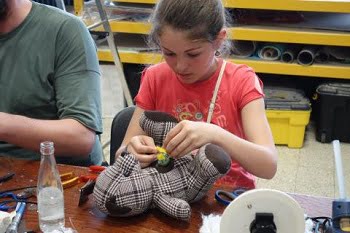A European photonics research consortium gave girls and young women in 10 countries the opportunity to explore STEM careers over a one-year period through a series of workshops and challenges designed to increase the number of women working in science and engineering.
More than 1200 participants attended the PhabLabs 4.0 initiatives that offered the girls and young women 33 workshops throughout Europe. The age-appropriate workshops presented novel and innovative problems for students to solve using lasers and photonics technologies.

Courtesy of PhabLabs 4.0
The projects ranged from creating artwork using lasers, modifying a cuddly toy with photonics, or building an infrared glove that acts as a remote control, to more advanced challenges such as building an invisibility cloak or creating a hologram.
The researchers targeted three age categories: high school girls (Young Minds); female university students (Students); and women who may have already started their careers (Young Professionals 18+).
Ester Muylaert, 18, from Halle, Belgium, was one of the workshop participants and described the experience as “amazing and interesting.”
“We’ve learned lots of new skills that we wouldn’t have picked up in school,” she said. “To see the job in front of me and to meet the person who does that job has given me loads of ideas about what I can do in the future. It’s really made me want to work with photonics.”
One of the results of PhabLabs 4.0 has been the publication of gender-sensitive material for the workshops, and a booklet that acts as a guide to future Fab Labs, which schools and universities can use to attract the interest of girls and young women to science and technology. Supported by the Gender Action Team, project developers have had the backing of the European Commission with funding from Horizon 2020, and support from a number of professionals such as professor Averil MacDonald from WISE (Women in Science and Engineering).
“Girls and young women are more likely to consider studying STEM subjects beyond age 16 if they see that the subject keeps their options open,” MacDonald said.